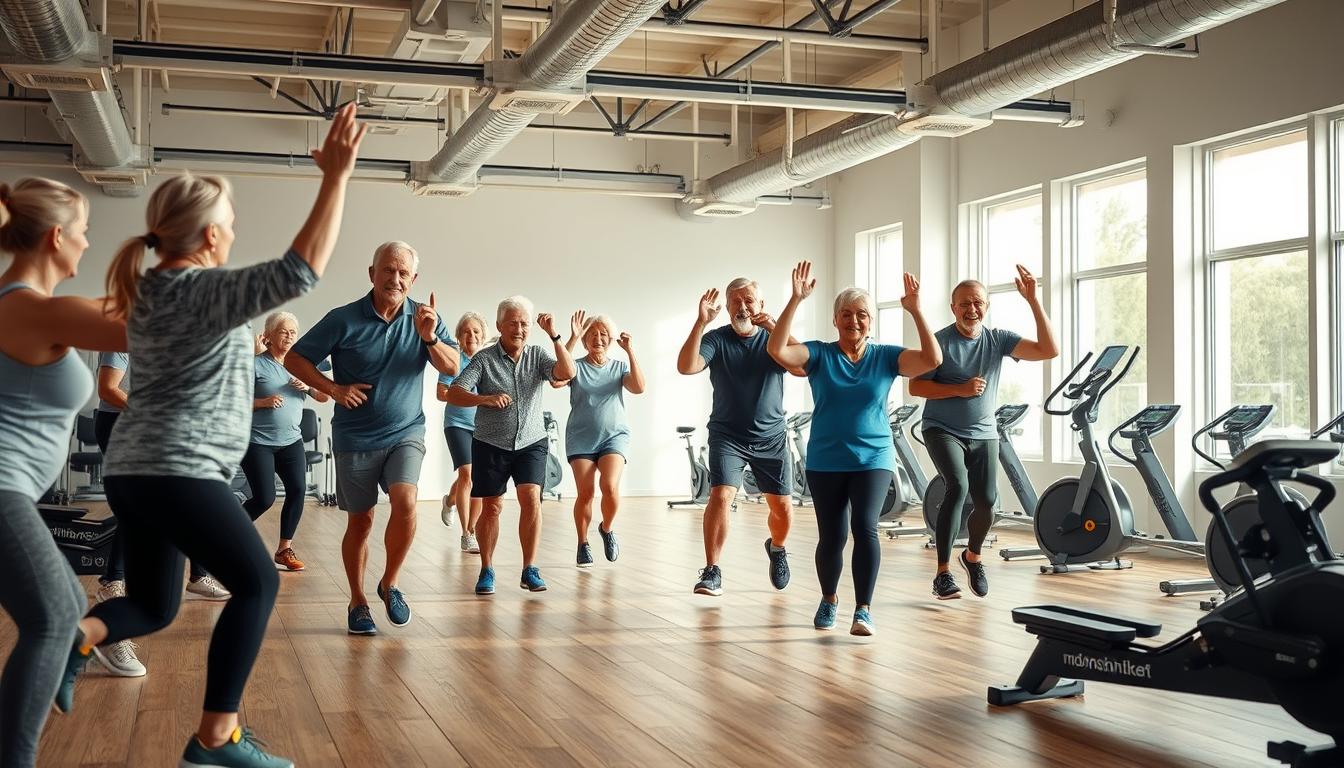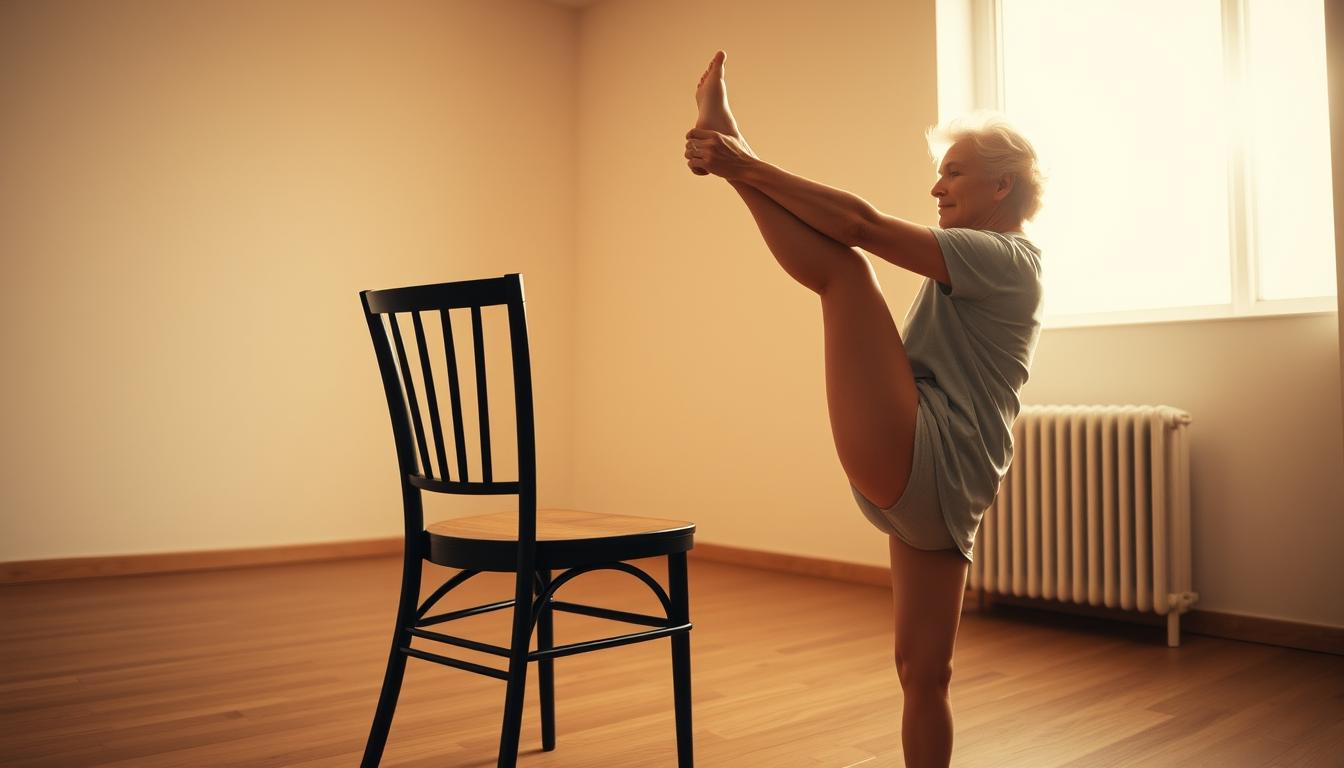Want to turn back the clock without buying a time machine? Science says short bursts of intense activity—like alternating one-minute brisk walks with leisurely strolls—can boost heart health, muscle strength, and energy levels for older adults. I’ve seen 70-year-olds outpace millennials on hiking trails after adopting this style of training, and you don’t need to sprint like Usain Bolt to reap the rewards.
Let’s squash the myth that rigorous exercise is only for the young. A 2023 study in the Journal of Aging and Physical Activity found that folks over 60 who did interval training twice weekly improved their fitness markers by 20% in just eight weeks. The secret? Working smarter, not longer. Think: 30-second bursts of arm raises or seated leg pumps followed by recovery periods (yes, coffee-sipping counts).
Safety first—always. I’ve helped clients modify movements for creaky knees or stiff shoulders. One client swapped jumping jacks for gentle shadowboxing; another used soup cans instead of dumbbells. Your body sets the pace.
Ready to ditch the “slow and steady” stereotype? Up next: how to build a routine that’s as flexible as your favorite yoga pants, plus heart rate hacks and recovery tricks even your grandkids will envy.
Understanding the Science Behind HIIT for Older Adults
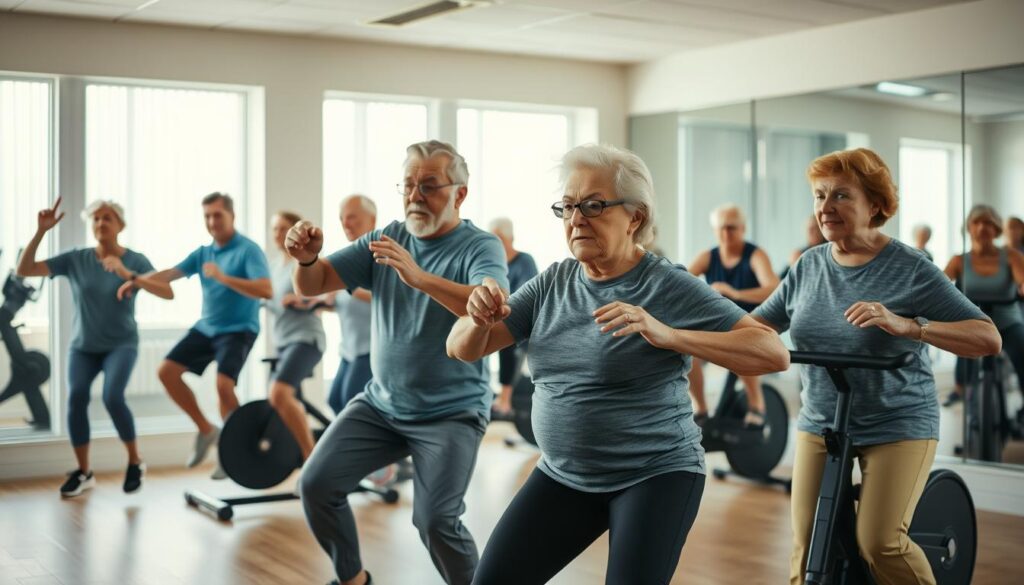
Ever wonder why quick bursts of movement followed by rest periods work like a biological tune-up? Your body responds to high-intensity intervals by activating survival mechanisms honed over millennia. Think of it as tricking your cells into thinking they’re 20 years younger—without the midlife crisis.
Your Body’s Hidden Upgrade Button
A 2022 Cleveland Clinic study found that just 10 minutes of interval-based activity three times weekly improved insulin sensitivity by 30% in adults over 65. That’s better than some medications! During intense phases, your heart becomes a more efficient pump, while recovery periods let it “learn” to reset faster. I’ve seen clients lower their resting heart rate by 15 beats per minute within months.
The Muscle Memory Miracle
Here’s the kicker: research shows these short-duration efforts preserve fast-twitch muscle fibers that typically decline with age. One AARP trial revealed participants maintained 90% of leg strength after six months of interval training—compared to 70% in steady-state exercisers. Your morning walk? Still great. But adding 30-second speed bursts? That’s where the magic happens.
Your cells’ mitochondria—those tiny energy factories—multiply during recovery phases. A Journal of Applied Physiology paper proved this adaptation helps combat fatigue and brain fog. And no, you don’t need special equipment. My 68-year-old neighbor uses her staircase for minute-long challenges, resting while her tea brews. Science-approved multitasking!
HIIT Workouts for Seniors: How to Begin Safely
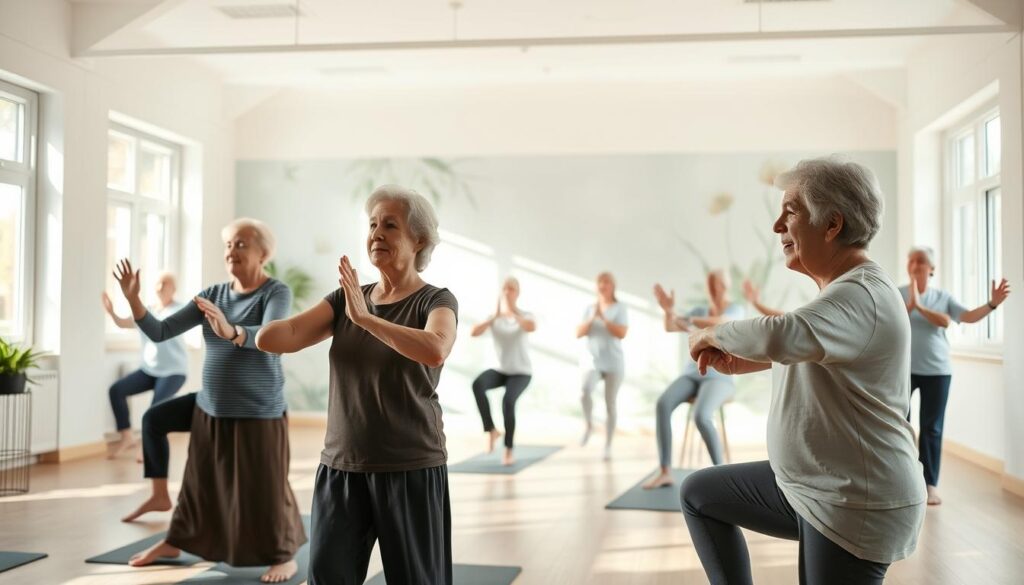
Safety isn’t just a precaution—it’s the foundation of lasting fitness success. Let’s create a game plan that respects your body’s history while building its future. Think of this as assembling your personal pit crew before revving the engine.
Step 1: Team Up With Your Body’s Allies
I always tell my clients: your doctor is co-captain of this journey. A recent Johns Hopkins study found 68% of older adults had undiagnosed conditions affecting exercise safety. My 72-year-old client Martha discovered mild arrhythmia during her pre-activity EKG—now she modifies her interval training heart zones accordingly.
Step 2: Smart Movement Blueprints
Start where gravity helps rather than fights. Chair squats teach proper form while reducing knee strain. Wall push-ups build upper body strength without wrist stress. I’ve had clients combine these with golf-specific conditioning for full-body results.
Try this starter sequence:
– 1 minute seated leg lifts (work)
– 2 minutes slow breathing (recovery)
– Repeat 3x
Track progress using talk-test intensity: you should manage short phrases during effort phases. If you’re gasping, ease up. Remember—consistency beats heroics every time. Your joints will thank you tomorrow!
Customizing Your HIIT Routine for Lasting Results
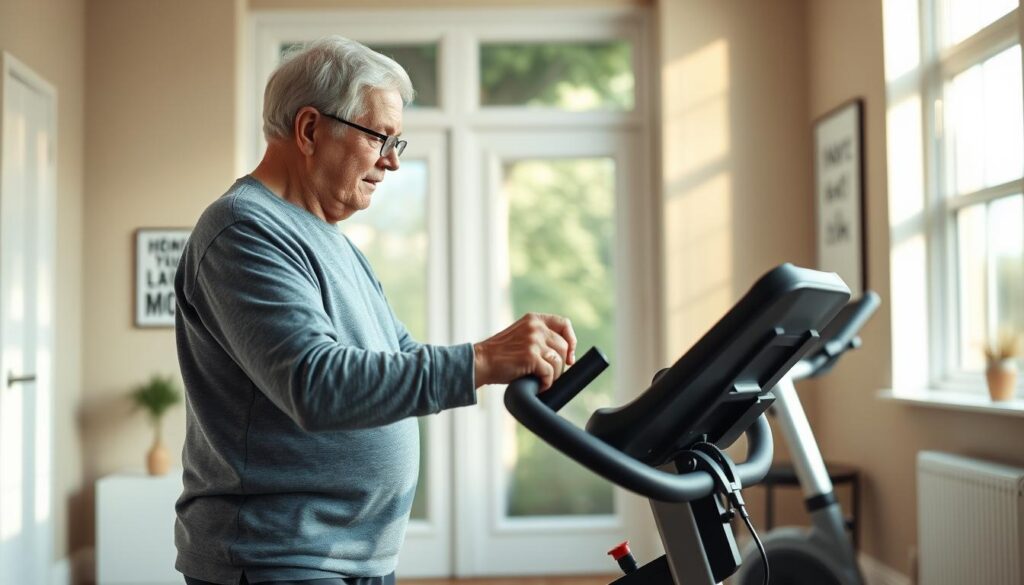
Think of your exercise plan like a favorite recipe—the base ingredients stay the same, but the seasoning changes with your taste. I once helped a retired teacher modify her routine using kitchen timers and a folding chair. Three months later, she could lift her giggling grandkids without wincing. That’s the power of personalization.
Your Body’s Unique Dashboard
Start by playing detective with your fitness level. Can you chat comfortably during a brisk walk? That’s your baseline. My client Bob, 67, discovered his “challenge zone” by pedaling a stationary bike while watching baseball—he’d increase resistance during commercials, then recover between innings.
| Fitness Level | Work Phase | Recovery Phase | Example |
|---|---|---|---|
| Beginner | 30 seconds | 2 minutes | Seated arm circles |
| Intermediate | 45 seconds | 90 seconds | Standing leg lifts |
| Advanced | 1 minute | 1 minute | Step-ups with light weights |
Your heart rate is the ultimate truth-teller. Aim for 70-85% of your max during effort phases (calculate with 220 minus your age). My trick? Sing show tunes during recovery—if you’re gasping through “My Shot” from Hamilton, dial it back.
Small tweaks create big waves. Swap standard push-ups for angled ones against a railing. Add one extra minute to your cycling intervals every two weeks. Remember, consistency isn’t about perfection—it’s showing up and adjusting as needed. Your future self will high-five you for it.
Real-Life Applications and Success Stories
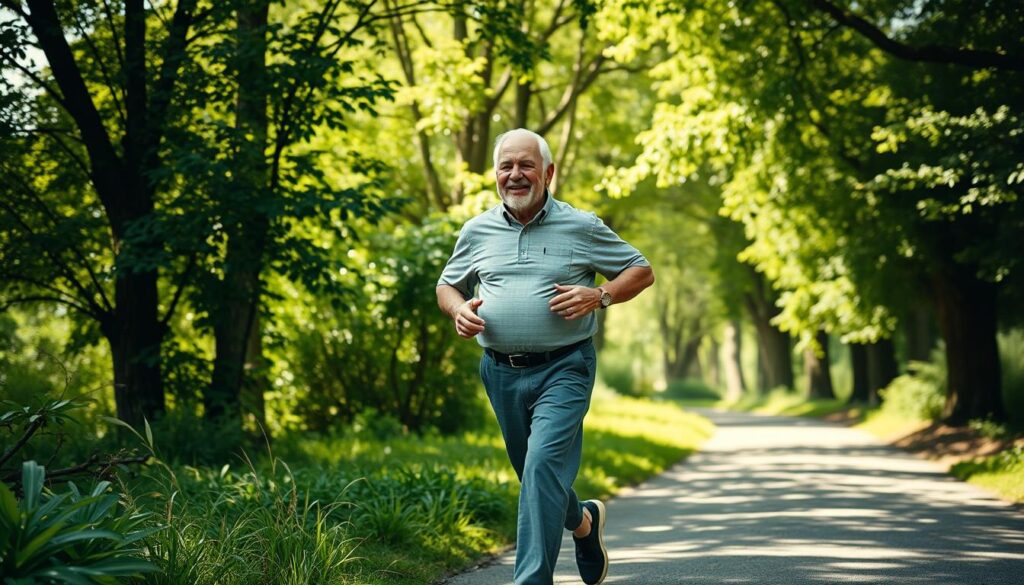
What if your next vacation could double as a fitness victory lap? Meet Dan—a 67-year-old retired accountant from Toledo who traded Ohio’s gray winters for Italy’s sun-drenched Dolomites. His secret weapon? Ten-minute cycling sprints between caregiving sessions for his wife with Parkinson’s. “I needed energy to be her rock,” he told me. “Turns out, those quick bursts on my Peloton bike made me stronger and saner.”
Dan’s Experience: From Daily Pedals to Italian Climbs
Dan’s routine wasn’t complicated: 30 seconds of all-out pedaling, 90 seconds of coasting, repeated five times. Within months, his heart rate recovery improved by 40%—a bigger boost than his blood pressure meds provided. Last fall, he summited a 6,000-foot alpine pass without stopping. “My grandkids kept asking if I’d cloned myself,” he joked.
Examples of Beginner and Advanced HIIT Sessions
Dan’s story isn’t magic—it’s mechanics. Whether you’re starting slow or chasing peaks, interval training adapts to your pace. Check out these tweakable templates:
| Level | Work Phase | Recovery Phase | Total Time |
|---|---|---|---|
| Beginner | 20-sec slow marches | 40-sec seated breathing | 10 minutes |
| Advanced | 45-sec high knees | 75-sec wall lean rests | 15 minutes |
See the pattern? Short efforts with generous recovery. A 2024 Mayo Clinic study found this approach preserves muscle mass three times better than steady cardio. Dan’s “Italian training”? He practiced step-ups while waiting for his espresso machine. Pro tip: Your kitchen timer makes a perfect interval coach—no gym membership required.
Wrapping Up & Taking the Next Step
Your journey to stronger tomorrows starts with today’s smart choices. Research shows gradual progress beats drastic changes—like using a kitchen timer for 30-second bursts of chair exercises while dinner simmers. I’ve watched clients transform laundry-folding into leg lifts and commercial breaks into core drills. The magic lies in micro-moments, not marathon sessions.
Keep your heart rate monitor handy, but trust your body’s signals more. If belting out “Sweet Caroline” feels impossible during recovery, ease up. One client tracks progress by how many stairs she climbs before needing groceries as a breather. That’s real-world fitness.
Your toolbox? A sturdy chair, comfy shoes, and curiosity. Try alternating 45 seconds of seated arm punches with 90 seconds of slow stretching. Notice how your upper body responds over weeks. Celebrate when you swap grocery bags without shoulder twinges.
Remember—this isn’t about keeping up with Peloton instructors. It’s about outsmarting yesterday’s limits. What’s your first move? Maybe power-walk to the mailbox with three speed surges. Or dance through one song, pausing when the beat drops. Your cells don’t care about labels—just consistent, joyful activity that whispers: “We’re not done yet.”
